This post may contain affiliate links. Please see our disclosure policy.
Muscadine jelly is a traditional Southern preserve made from thick-skinned muscadine or scuppernong grapes. This old-fashioned jelly is made without added pectin, relying on the natural pectin in the fruit to set. With just sugar and juice, it’s a simple, flavorful way to preserve the taste of grape season.
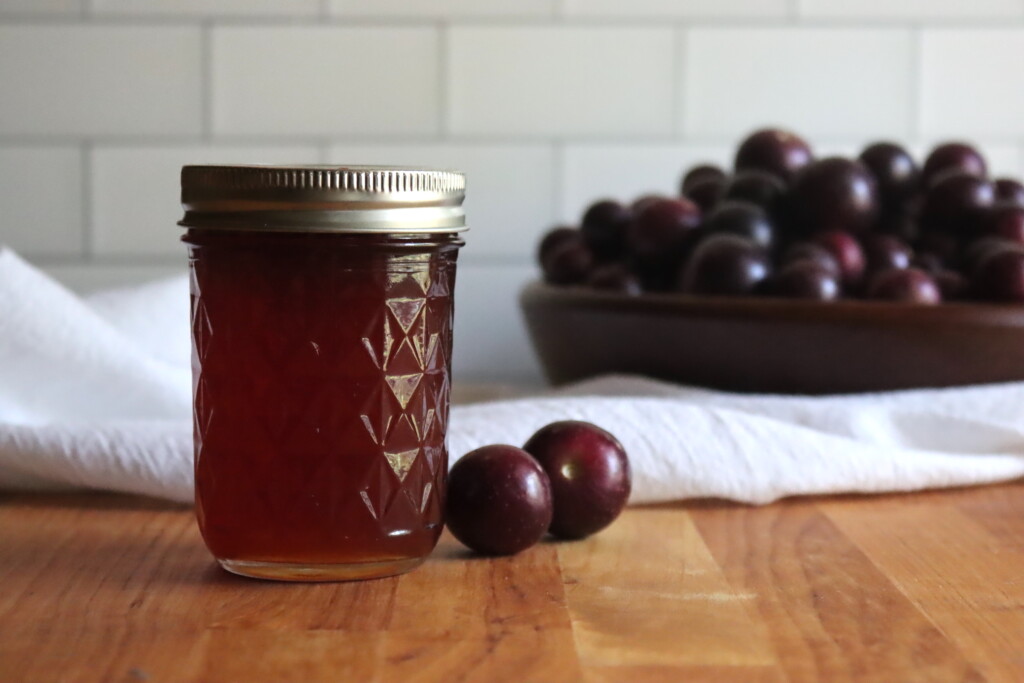
Muscadine and scuppernong grapes are a Southern classic, thick-skinned, sweet, and bursting with flavor. While they’re a bit much to eat in quantity fresh, they make a deeply flavorful jelly that’s easy to preserve at home. This old-fashioned recipe doesn’t require any added pectin, just fruit and sugar, making it ideal for small-batch canning with minimal ingredients.
Whether you’re working with deep purple muscadines or golden-green scuppernongs, this traditional jelly is a great way to enjoy the harvest year-round.
This recipe uses just the juice, discarding the pulp and skins, and if you’d like a chunkier preserve that uses the whole fruit, try Muscadine Jam.
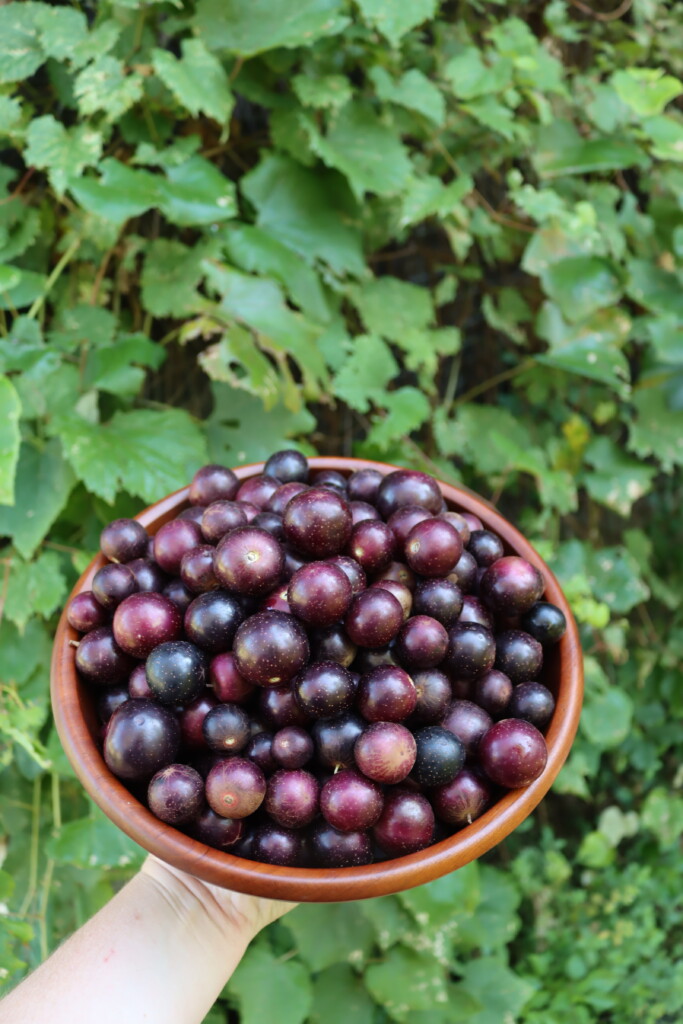
What Are Muscadines and Scuppernongs?
Muscadines (Vitis rotundifolia) are native to the southeastern U.S., and thrive in warm, humid climates where other grapes may struggle. Scuppernongs are a variety of muscadine, usually greenish-bronze, and equally popular in Southern kitchens. Both types are high in natural pectin, especially in their thick skins, which makes them perfect for no-added-pectin jelly.
The flavor of muscadine jelly is bold and distinctly grape-like, but with more richness and depth than standard Concord-style preserves. It’s a seasonal favorite across the South and a great use for backyard vines or farmers market fruit.
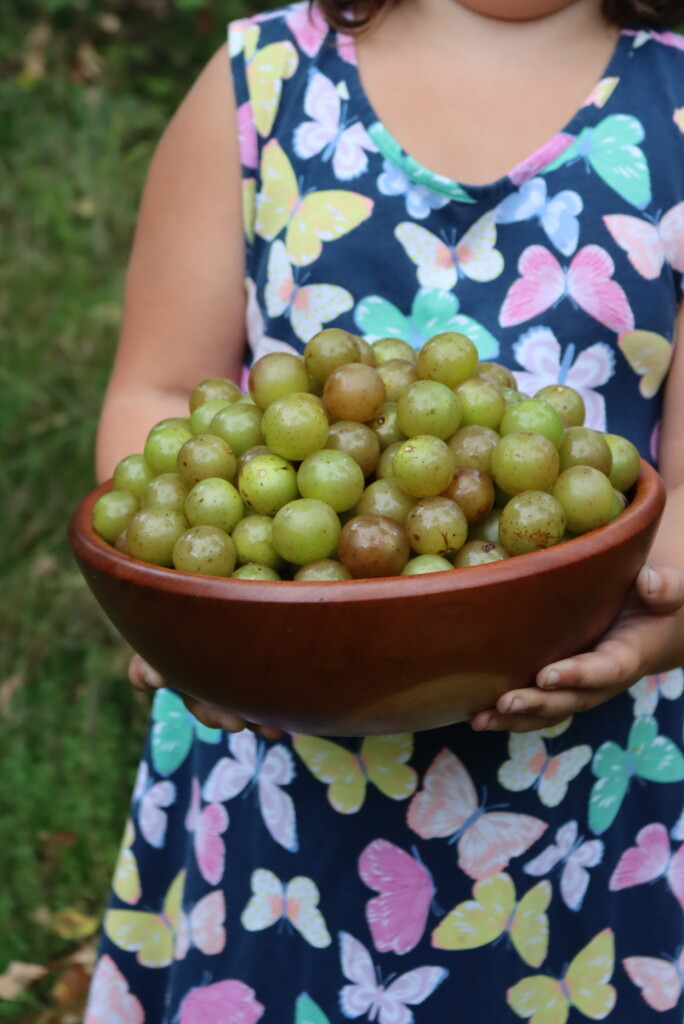
Ingredients for Muscadine or Scuppernong Jelly
This simple jelly recipe relies on the natural pectin in the grape skins and seeds, so there’s no need for boxed pectin.
- 4 cups muscadine or scuppernong juice (from about 3½ to 4 pounds of grapes)
- 3 cups granulated sugar
This will yield about 3 to 4 half-pint jars of jelly.
How to Make Muscadine Jelly Without Pectin
Start by selecting fully ripe grapes. You’ll want to use fruit that’s sweet and flavorful but not overripe—underripe grapes can contribute bitterness, while overripe ones may not contain enough pectin to gel.
Extracting the Juice
Wash the grapes well and crush them by hand or with a potato masher. Place the crushed fruit in a heavy-bottomed pot without adding any water. Bring to a simmer over medium heat and cook for about 10 minutes, stirring constantly to help break down the fruit and extract the juice.
After simmering, press the mixture through a fine-mesh strainer or food mill to separate the juice from the solids. Pour the strained juice into a container and refrigerate it overnight. The next day, strain it again through a jelly bag or several layers of cheesecloth—without squeezing—to ensure a clear jelly.
You’ll need 4 cups of strained juice to make one batch.
This is where you’d stop if you were canning muscadine juice, and then you could just process the jars without thickening or sugar. But we’re carrying on to make muscadine jelly, so it’ll need a bit more cooking.
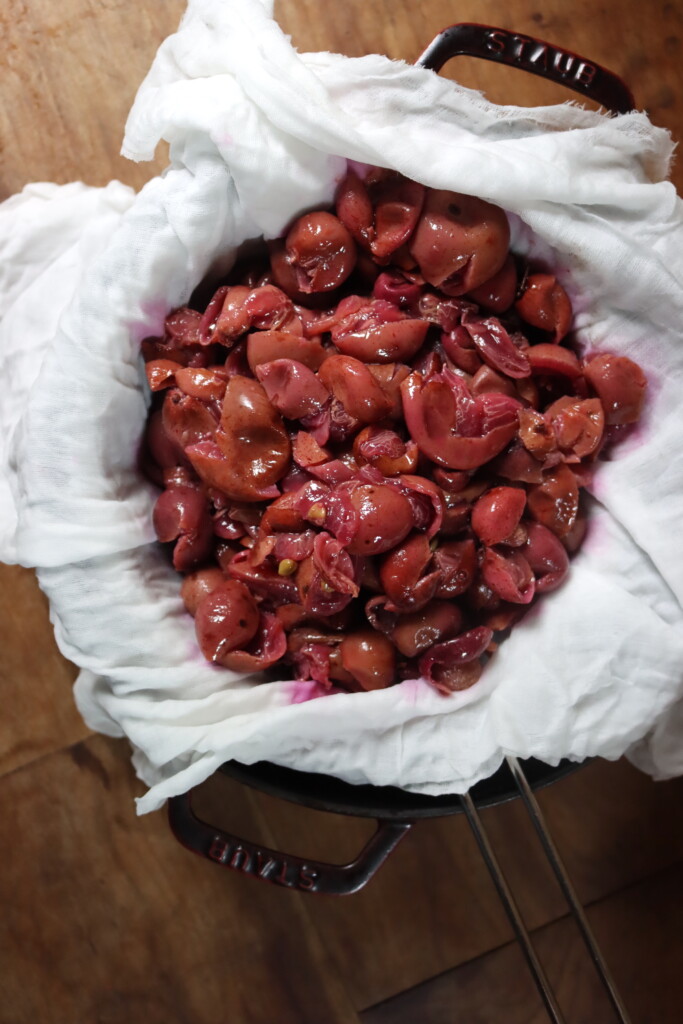
Making Muscadine Jelly
In a large saucepan, bring the 4 cups of juice to a boil. Add the 3 cups of sugar and stir until fully dissolved. Increase the heat and boil the mixture rapidly until it reaches the gel stage, which is 8°F above the boiling point of water (typically around 220°F at sea level). You can also use the sheeting test: dip a spoon into the hot liquid and tilt it—if the jelly drips off in a single sheet instead of separate drops, it’s ready.
Remove the jelly from the heat and quickly skim off any foam. Ladle the hot jelly into hot, sterilized jars, leaving ¼ inch headspace. Wipe the rims, apply two-piece canning lids, and process in a boiling water bath for 10 minutes (or 15 minutes if above 6,000 feet in elevation).
Start timing once the water returns to a rolling boil. After processing, allow the jars to cool undisturbed for 12 to 24 hours before checking the seals.
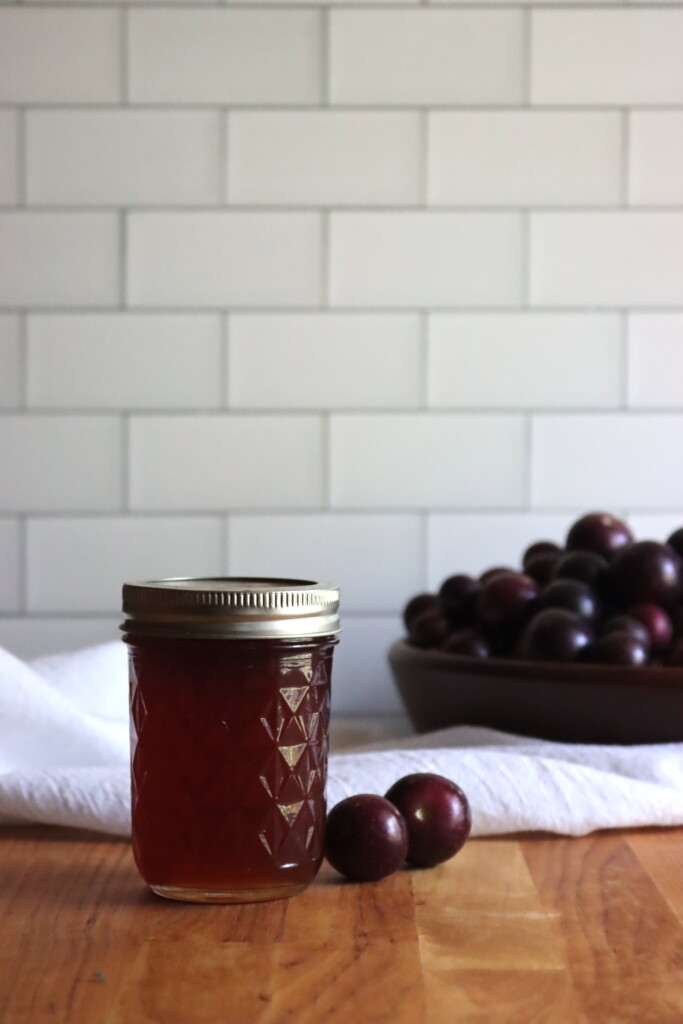
Troubleshooting and Tips
- If your jelly doesn’t set, don’t panic—jelly without added pectin can take longer to firm up. Give it 24–48 hours before deciding whether to reprocess.
- Too runny? You can reboil it with a bit more sugar and lemon juice, or simply enjoy it as a syrup over pancakes or yogurt.
- Too firm? This usually means it was cooked a bit too long. It’ll still taste great—just slice it like fruit cheese.
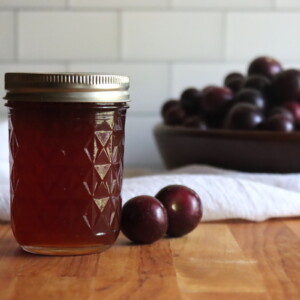
Muscadine Jelly
Ingredients
- 4 cups muscadine or scuppernong juice
- 3 cups granulated sugar
Instructions
- Prepare jars and a boiling water canner before starting. Sterilize jars and keep them hot until ready to fill.
- In a large saucepan, bring 4 cups of prepared grape juice to a boil. Add 3 cups of sugar and stir until completely dissolved.
- Boil rapidly over high heat, stirring constantly, until the jelly reaches 8°F above the boiling point of water at your elevation (typically 220°F at sea level), or until it sheets off a spoon.
- Remove from heat and quickly skim off any foam. Ladle hot jelly into hot, sterilized jars, leaving ¼ inch headspace. Wipe rims, apply lids, and process in a boiling water bath according to altitude.
Notes
Nutrition
Nutrition information is automatically calculated, so should only be used as an approximation.
Jelly Recipes
If you enjoy making traditional fruit jellies, there are plenty more small-batch recipes to try.
My grape jelly recipe is perfect for Concord or store-bought juice and includes both pectin and low-sugar options. Red currant jelly is naturally high in pectin and has a tart, jewel-like finish that’s great for glazing meats or adding to cheese boards.
For a foraged twist, try wild grape jelly, which has a deep, complex flavor that’s distinctly different from cultivated grapes. You might also enjoy blackberry jelly, made seedless for a smooth spread, or dandelion jelly, a springtime preserve that captures the mild sweetness of wild blossoms in each spoonful.
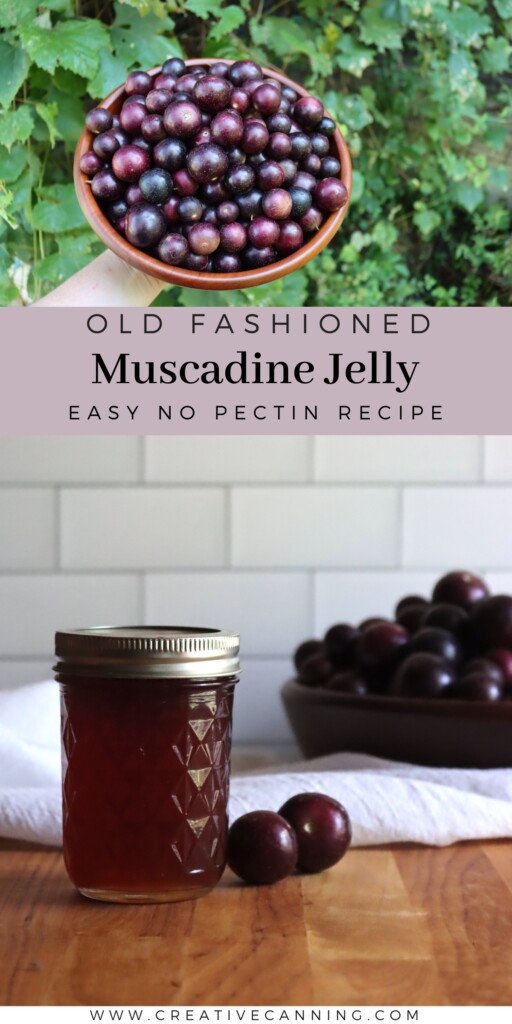
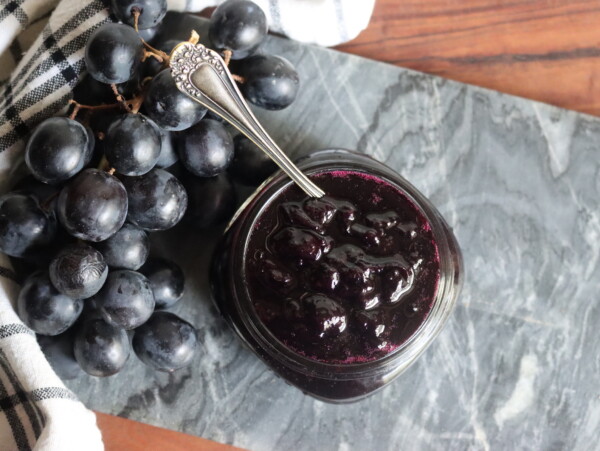
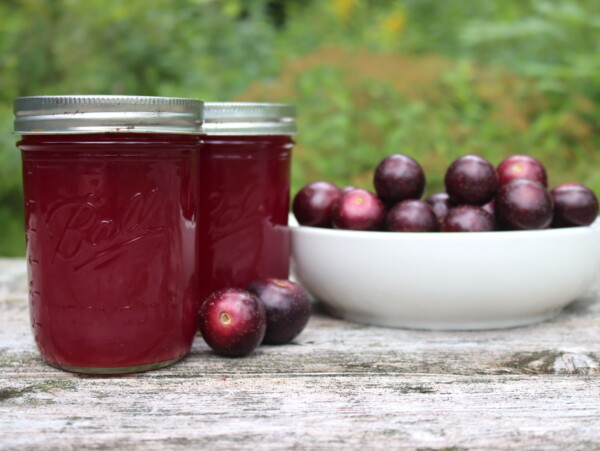
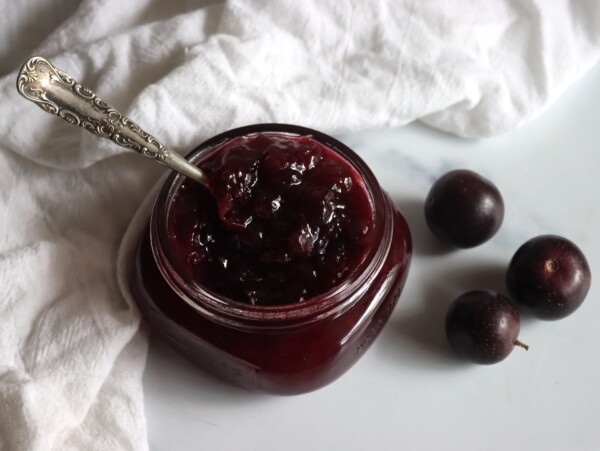
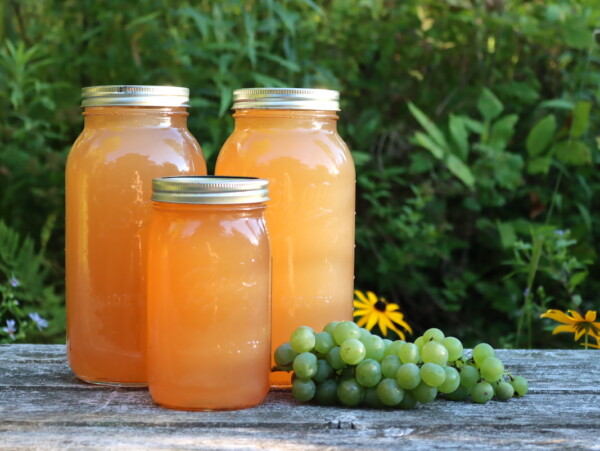
Such a tasty old fashioned treat!
Your instructions are so easy to read and understand. Thank you for sharing with us.
Can’t wait to try!
Wonderful!